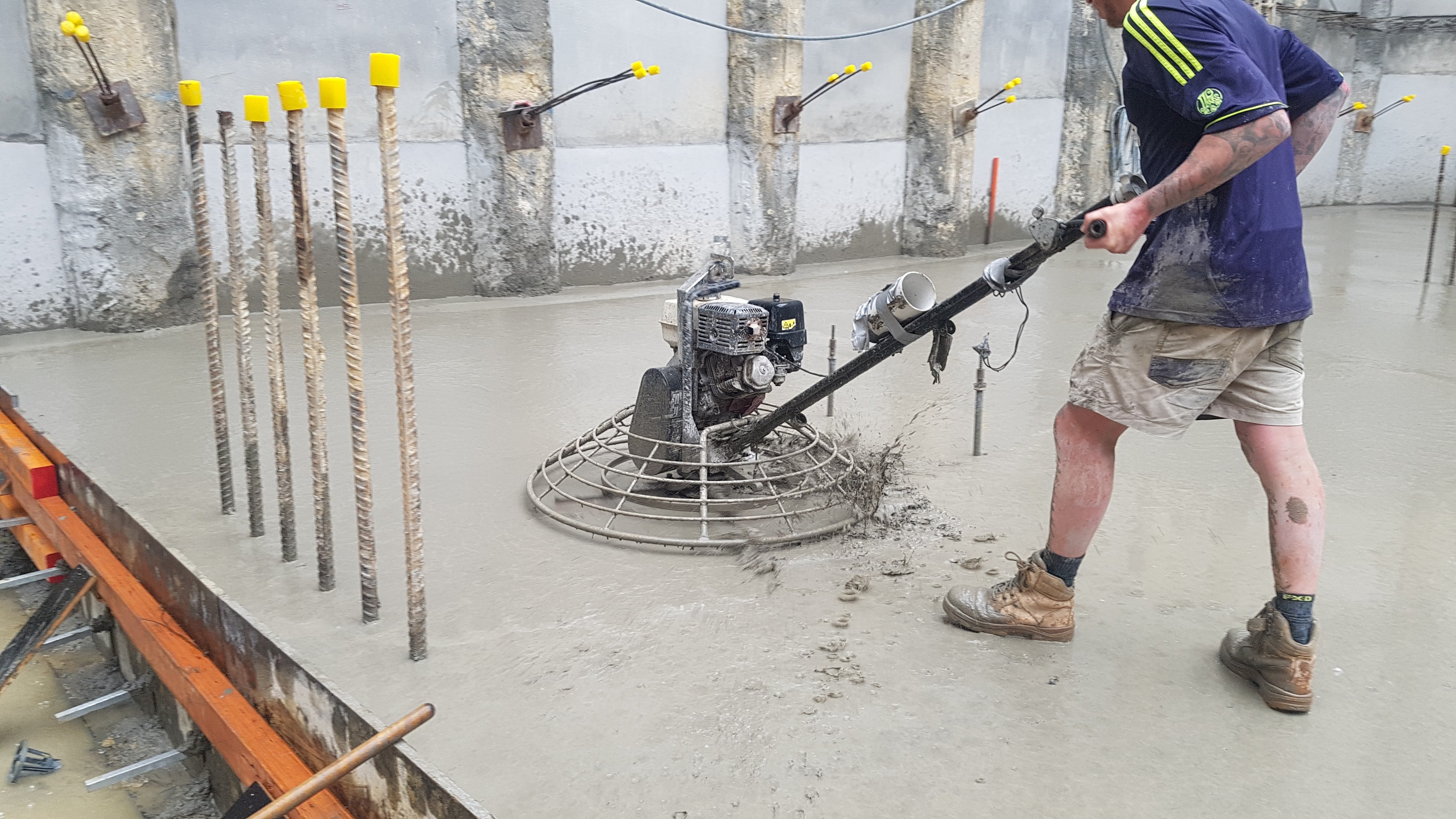
There are few things more frustrating in life than when Mother Nature springs an unexpected rain shower…just after you've placed concrete. Unfortunately it happens all too often, especially in winter. However, there’s no need to despair, all is not lost yet. We've compiled a few tips and tricks to try and help resolve the issue.
What to do if it rains before concrete has been finished
Rain whilst your concrete is being placed or finished can lead to excessive bleed water. The excess water will upset the water-cement ratio, leading to a weakened surface or potential dusting of the concrete once cured.
To remedy this, the surface water can be removed by simply dragging a garden hose or air compressor hose across the surface. The heavier the hose the better. This may have also removed the slurry making it difficult to finish. Dry casting premixed stone dust and cement will help re-establish the material removed with the bleed water. Stone dust and cement can also be mixed to a slurry and trowelled into the surface if required to aid in finishing.
Note: This method is not fail-safe. If the concrete has been exposed to large quantities of water, it may not be repairable and may need to be removed or ground back once cured. If too much water is present when applying the stone dust and cement, the surface may delaminate and need to be ground back. Read on to find out more.
What to do if it rains after the concrete has been finished
You've just finished your concrete pour and it's looking great, but you look up to see storm clouds on the horizon. Rain on freshly finished concrete can damage the surface, and in extreme cases, wash the surface off the concrete exposing the aggregate.
To prevent this, covering the concrete with hessian will protect the surface from running water, reducing the risk of erosion. Covering the concrete with plastic will also protect the surface, however it will substantially increase the drying time and possibly result in condensation under the plastic.
Repairing rain damaged concrete
A concrete floor dusts under traffic because the wearing surface has been weakened, normally as a result of water damage whilst finishing. Depending on the severity of the damage, a surface densifier or concrete hardener can be used to harden or densify the surface. If the concrete has been damaged to the extent that the surface can be scratched with a key or scuffed with your shoe, the only thing to do is grind the surface back until you reach a sound surface.
Grinding the concrete back will obviously remove any texture on the surface and potentially expose the aggregate. If your client is happy with this surface, a seal with an acrylic sealer, bonding agent or densifier should prevent any further dusting or damage in future. The final use of the surface should be considered when sealing. For example, a bonding agent may be appropriate if the surface is to be covered by carpet or floating floor but would not be appropriate if it is a finished surface. (we'll explain this a little further down).
Resurfacing rain damaged concrete
When resurfacing concrete, it is important to ensure that the concrete has completely cured for at least 14 days in summer and at least 28 days in winter.
Depending on the project, a level surface could be resurfaced by using a trafficable levelling compound. Simply prime the surface with a suitable primer and apply a thin coat of levelling compound.
Where the surface is not level or to add texture back to a ground surface, a resurfacing compound may be suitable. Resurfacing compound is a polymer cement coating which is sprayed or floated on to the surface to create a texture. First, the surface should be primed using a 1:1 mix of modifier and water. This will ensure good adhesion and prevent the concrete from absorbing the moisture from the resurfacing compound.
The resurfacing compound is then mixed with water and modifier and can be sprayed from a hopper gun, floated and lightly stippled or broom finished. Resurfacing compound can also be tinted if required.
Repairing dusty concrete surfaces
Providing the surface can't be scratched or scuffed, a treatment of a silicate densifier such as Boss Surface Finisher will penetrate and densify the surface reducing or eliminating dusting. Surface finisher should be wet scrubbed into the surface and any excess product should be squeegeed off the surface before it dries.
The best solution…
Of course, the best way to avoid rain damaged concrete is don’t pour when rain is forecast but that is often easier said than done. These methods are not fail-safe but rather tips and ideas of how to save a job and hopefully save you from the expense of removal and re-concreting.
Need expert advice on concrete repair products? Talk to the team at Allcon
We’re a family business with over 100 years collective experience in specialist concrete construction products, so we know the hard truths about concrete. Call us on 1300 255 266. Or click here to get in touch.
